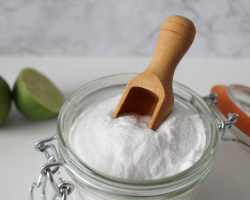In this article you will find out what can be done if the yeast dough has not risen how it can be further applied or how to correct the situation. Also find out the reasons for this situation. If you get acquainted with these questions, then in the future you will not have errors when preparing a yeast dough with your own hands.
Content
In the event that the yeast dough did not rise, then during its knead, errors were made. There is always gluten in the composition of flour, it, mixing with liquid components, begins to wander and actively increase in size. It is because of this that the dough comes out elastic, light, has a porous texture. The dough will be ideal if you use fresh yeast, the highest grade flour, observe the temperature regime for the activity of yeast. Most often, yeast is the source of problems with the test. For example, not every mistress knows that dry yeast in an open state will live only one week at a temperature regime of 3 to 6 degrees. Live yeast is suitable for use for 12 days, if stored in a cold place, and in the warm shelf life is reduced to one day.
How long should the yeast dough rise?
Unfortunately, the problem is that the yeast dough has not risen, it can occur not only among novice cooks, but also among experienced housewives. But not everyone knows how much it is worth waiting until the dough changes in size. This time may vary, different factors affect it. There are super-grooves that can increase the dough in volume in 20 minutes, although according to the rules, yeast cells are divided in about 2-3 hours. And for this to happen, good conditions should be created for yeast. In particular, the dough should be left in a warm, damp place. Thus, you will improve the fermentation process.

Other factors affect the speed of the yeast mass of yeast: the quality of the flour, temperature, the type of yeast. So it’s not strange that even experienced culinary specialists face the problem of the quality of yeast dough.
IMPORTANT:In cold water, yeast simply does not come to life, the temperature of the fluid directly affects the reproduction of the body. And in hot water, above the temperature of 32 degrees, fermentation slows down, and with too high temperature mode, the yeast is generally dying. As a result, you get baking rough, drying outside, and inside.
How to make the yeast dough rises?
Before you find out why the yeast dough did not rise, we will figure out in more detail what factors affect the fact that the dough is ideal, in other words we will find out how to make a good yeast dough. To do this, it is necessary to use, first of all, quality products, ranging from yeast and ending with flour of wheat sowing. Sarend the flour before use, and the temperature of this product should be room. Sift it in order to saturate it with oxygen.

To get downstream, all products for it use room temperature. In particular:
- Yeast act faster in a warm environment, therefore it is better to dissolve them in heated milk, just do not overheat the product. If the temperature is above 32 degrees, then yeast microorganisms slow down the reproduction or even die. In cold water, implicated yeast will also not let the yeast dough increase in size.
- Cream oil before use should be slightly heated, or rather melt. Do not add it to the mass of cold and hot. Optimum temperature, again 32 degrees.
- Sugar affects the fermentation of yeast directly. Ideally, when five percent of the total amount of the total amount is added to the dough. A small amount of sugar or too much negatively affects the propagation of yeast microorganisms.
- A product such as salt can neutralize the effect of yeast cells, because it is added at the very end and a little.
IMPORTANT: As already mentioned, in order for the dough to fit, it will take about three hours. The special conditions are required without fail, namely: they put the dough in a closed room, it is advisable to close the windows, otherwise the dough can be bent (covered with a crust), if there is no such opportunity, then cover the dough with a bowl and put it in another bowl, and Then put on a heating pad.
The dough in this state costs about 40 minutes, then it must be mixed, let it relax for another 40-60 minutes. For the third time, repeat the process of kneading again. Thanks to such actions, the dough will become lush also elastic. Because carbon dioxide comes out of the mass and then gluten is restored.
When you mix the dough, it is saturated with oxygen, rises. It is this process that is also important in the proof of the dough. When you repeat the baches of the dough, try not to interfere with a large amount of flour, otherwise the dough can become solid. When mixing, the bun should lag behind the hands, it is also recommended to wet the hand in the lean oil or to wave into the flour in front of the kneading process.
The finished dough is determined by pressing it. If the dough immediately becomes even, then it is not sufficiently sustained. The bun may be convex in this case, and there may be small long cracks on the sides. When the dough was shrugged, there will be no trace of pressure on it at all, and the baking will turn out slightly blurry.
Why doesn't yeast dough rise?
There are many factors affecting the work of yeast. Why the yeast dough did not rise from you, you will understand when you find out these factors. The first thing that affects the yeast is the quality of products. In particular, let's start with flour. When buying flour for bread or pie with yeast, choose quality products. After all, now in supermarkets there are many types of flour from different countries and manufacturing companies.

- In terms of quality of one of the best, it is considered flour Higher varieties and marked "Extra" on the packaging. It is suitable for any baking. And the quality of the finished pie will definitely please you. Crucific flour is more often used for cupcake with a yeast base. The flour of the first grade will go for homemade buns and pies, bread. The second grade is also suitable for bread, pizza. And rye is added to white flour, delicious bread will not come out of one rye.
- Which the proportion should be kneading - also an important factor (this applies to the ratio of flour and liquid). Since, if you add a lot of water and little flour, then there will be uneven porosity, and the top of the product may fail. And when little water is added to the dough, then the initially finished pastries become overdred, therefore it quickly becomes callous. It is desirable that the liquid is about 54-59 percent of the total volume.
- Temperature regime It has one of the most important values. In cold water, yeast will lose the ability to work and the dough will not rise, and the yeast will die in too hot water. The optimum temperature regime for the work of yeast is 30 degrees.
- If entered into the dough additives, then their properties should also be taken into account. For example, additives with fiber, dried fruits, brans thicken the density of the dough. Therefore, grammar should be followed in recipes so that hard dough does not work out. But if fresh fruits are added, then they thin the dough, moisture is contained, it affects the structure of the dough. If you add less salt to the yeast mass, then fermentation will increase, but the taste will be fresh, and sugar in large quantities weights the dough structure and it rises worse, even thanks to sugar, the finished pastries becomes golden. If you add cinnamon for the aroma to the mass, then keep in mind that it is able to kill yeast bacteria, therefore it is better to pour it into the mass at the very end of the batch.
- Separately, you should pay attention to yeast. They play one of the most important functions in the fermentation process. There are two types of yeast - the first wild, the second cultural. The former can be found everywhere, starting with air masses, ending with yeast that appear on fruit fruits (cherries, drains, etc.). Cultural is grown under special conditions, more often dry yeast is made of them. What to use to you, choose for yourself. The main thing is that they are suitable. To do this, study the shelf life, and check the storage conditions. After all, yeast is not stored for a long time after opening the packaging. Dry can be suitable for only a week if they stand in a cold place, and ordinary ones are stored for about 24 hours.
The yeast dough does not rise - how to correct the situation?
Sometimes it happens that the yeast dough has not risen, then urgently you need to correct the situation. What, in this case, can be done, how to do so that the dough still rises, let's look at the ways to correct this trouble.

- If you waited for half an hour-forty minutes, and the dough, which was, remained in size, then you can try to change the temperature. To do this, put the dough in some container on a warm heating pad or in any warm place so that the yeast begins to act. This method can be corrected by the situation if the temperature was from 6 degrees to 38. You can also add a new portion of yeast. After all, they could be stale if the temperature regime was withstanding, as expected.
- It is also important that the dough was when fermented. If it lay not covered with a towel near the window or open window, then it is covered with a crust and the fermentation process is disturbed. Therefore, you can try to get rid of this crust, interfere with the dough again, eliminate the draft, and cover the dough, let it fit.
- If you added salt at the beginning of the fermentation process, then it can kill yeast mushrooms. Therefore, it is recommended to add a new portion of yeast, more fluids, flour and sugar to the dough again. Then let the dough come in a warm place and knead it once, and then bake the product, which you planned.
- If you initially did not comply with a strict number of certain ingredients, then you will have to restore it and the dough will rise. It can be done very difficult, but still possible. It is especially important that you do not overdo it with sugar and do not pour a large number of yeast. Such actions can also spoil the dough, it will become heavy and will not be elastic.
It is interesting that people say that the mood of the baker also affects the kneading of yeast dough. If a person is angry, quarreled with someone, slander, screams, then the yeast dough does not come out. Although these are just assumptions, this can be. It is difficult to deny this factor. In a fit of anger, you can break the proportions and the dough will not work.
It happens that the sources of the problem cannot be established, and the mood falls when a person tried, and the dough does not come out the way it should be. Typically, in such cases, problems with product quality are possible. Maybe you bought yeast from the seller, and he did not keep them correctly. For example, in winter there is a frost of 20 degrees on the market, and the seller sells yeast, of course, that such a product is not suitable for the test. It is better to choose yeast in a store or in a supermarket.
The yeast dough does not rise, what to do?
What can you bake from the dough if the yeast dough has not risen? Do not worry, despite the fact that you had a problem, it can still be fixed. Do not rush to immediately throw the mass into garbage. From the dough you can cook various dishes and your relatives will try them with pleasure.
- The first thing that can be done from yeast dough is pizza. For this, the dishes are not a particularly sweet dough, do not even worry even if there is a lot of sugar. You can make pizza in this situation in the form of a pie with fruits and cottage cheese with an egg. And cooking it is very simple. You need to cut your favorite fruits, roll the dough with a thin layer. You can also add cottage cheese on top and pour the mass with an egg with sugar. Usually enough for cooking for 20-35 minutes.

- Still use yeast dough that did not fit to cook original pirozhkov in a pan. Roll up very thinly dough. Cut it so that it covers a frying pan. If a sweet option, then make a filling of jam or raisins, nuts, syrup. Put the filling on one half of the dough, and cover the second. You will get a pie like cheburek.
- On the above principle, small pies - round,with a diameter of 4-5 centimeters. The filling can be used any to your taste. Starting from cabbage, ending with cherries, apples. They are baked only not in a pan, but in the oven at a temperature of 180 degrees for about 20-30 minutes.
- Georgian dish - Khachapuri It is also prepared from such a test, and the option is wonderful. Due to the filling: cottage cheese 225 g + egg 1 pc. + garlic 1 pc. + salt, The pies are juicy and tasty. The diameter of the rolled circles should be about 7 centimeters. The filling is placed there and baked in a pan with butter.
- Chebureks They are also prepared from fresh dough, therefore, the not -up yeast dough is what is needed for Cheburs. Flood for Cheburs: minced meat 425 g + fried mushrooms 425 g + cheese 295 g + potato puree with fried onion 125 g. Size You can do at your discretion. Again, it is enough to roll out a thin layer that has not approached the dough and stuff it with a filling. Make wraps around the edges, like a dumplings, and then send it to hot oil and fry. By the way, they should be fried in a large amount of sunflower oil.
You see, even the dough, which has become unsuitable for lush buns and pies, you should not immediately throw it out. It can also be used to prepare other baking, which will become a decoration of the table.







